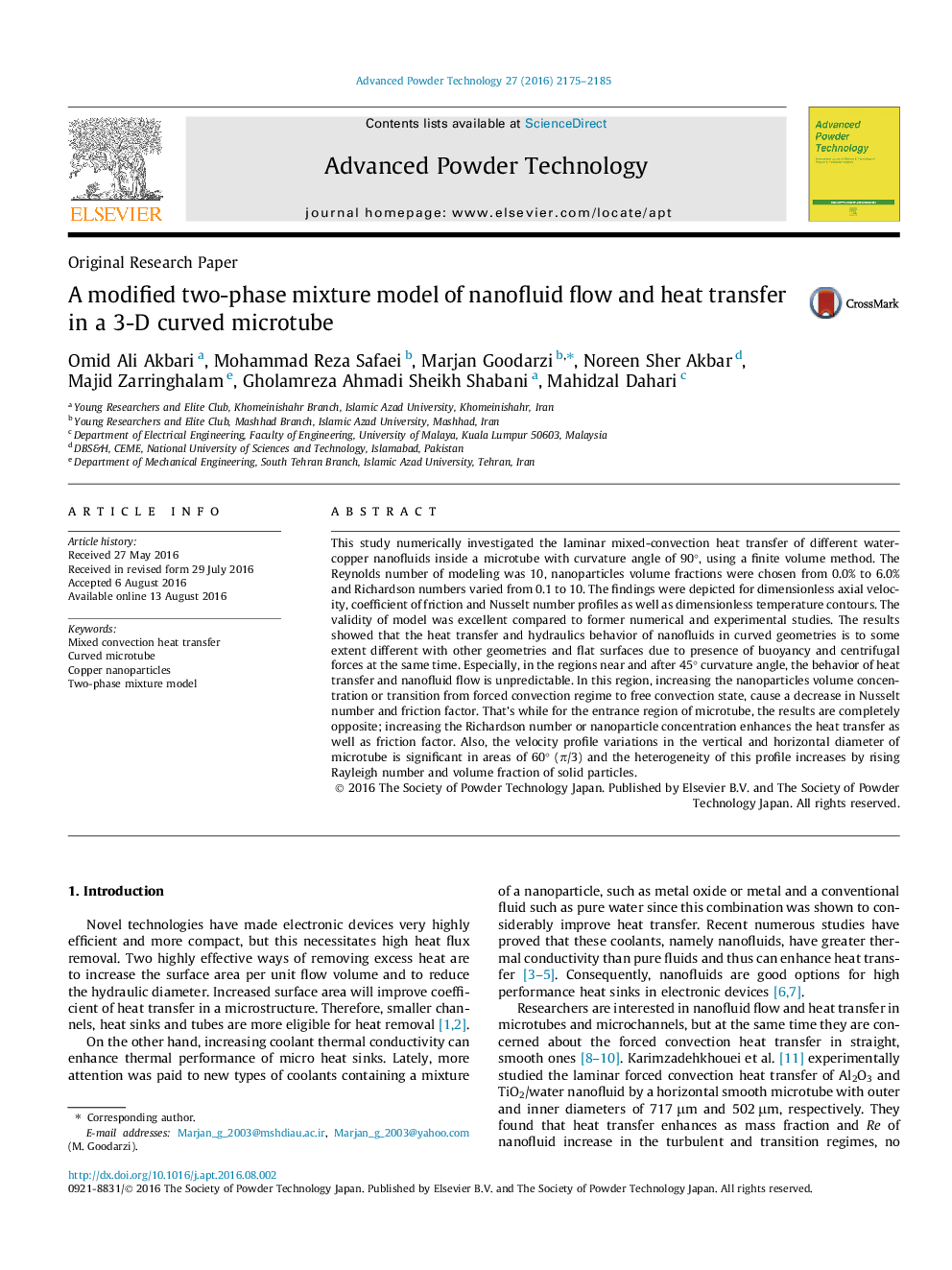| Article ID | Journal | Published Year | Pages | File Type |
|---|---|---|---|---|
| 6464762 | Advanced Powder Technology | 2016 | 11 Pages |
â¢A mixture model was used to model the nanofluid heat transfer in a 3-D curved microtube.â¢In a curved microtube, the heat transfer and fluid flow involves two distinct regions.â¢Axial velocity profiles do not have symmetry due to centrifugal and buoyancy forces.â¢Increasing nanoparticles amount, isotherms get to the intended temperature more rapidly.
This study numerically investigated the laminar mixed-convection heat transfer of different water-copper nanofluids inside a microtube with curvature angle of 90°, using a finite volume method. The Reynolds number of modeling was 10, nanoparticles volume fractions were chosen from 0.0% to 6.0% and Richardson numbers varied from 0.1 to 10. The findings were depicted for dimensionless axial velocity, coefficient of friction and Nusselt number profiles as well as dimensionless temperature contours. The validity of model was excellent compared to former numerical and experimental studies. The results showed that the heat transfer and hydraulics behavior of nanofluids in curved geometries is to some extent different with other geometries and flat surfaces due to presence of buoyancy and centrifugal forces at the same time. Especially, in the regions near and after 45° curvature angle, the behavior of heat transfer and nanofluid flow is unpredictable. In this region, increasing the nanoparticles volume concentration or transition from forced convection regime to free convection state, cause a decrease in Nusselt number and friction factor. That's while for the entrance region of microtube, the results are completely opposite; increasing the Richardson number or nanoparticle concentration enhances the heat transfer as well as friction factor. Also, the velocity profile variations in the vertical and horizontal diameter of microtube is significant in areas of 60° (Ï/3) and the heterogeneity of this profile increases by rising Rayleigh number and volume fraction of solid particles.
Graphical AbstractSchematic of the analyzed configuration.Download high-res image (59KB)Download full-size image
